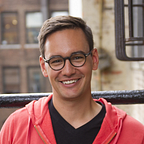These 80 Cities Flipped for Trump
Exploring the Cities that Flipped from Obama to Trump
We all know that Mr. Trump flipped six states red on November 9th. What you might not know is which cities Mr. Trump flipped from blue to red—or which cities Secretary Clinton flipped from red to blue.
A tsunami of red, it ain’t. In fact, Mr. Trump’s victories were localized around the northern segments of the Mississippi River, the Rust Belt, and the Black Belt. Here’s a closer look at which cities flipped for Mr. Trump:
At the top of this list: Fort Madison, Iowa, a three-county, three-state city of 61,000 centered on a bend in the Mississippi River. This city, dominated by manufacturing industries, shifted by 15.0% toward the G.O.P. in 2016.
Fort Madison—slowly shrinking in population, nearly 95% white, shedding manufacturing jobs in the middle of the country—captures perfectly the habitat of the “Forgotten Man” that turned the tide in 2016.
Secretary Clinton had her victories, too—even beyond the popular vote:
Something changed in Utah: Salt Lake City and Summit Park both moved by double-digit percentages toward the Democratic presidential candidate. Was it Mr. Trump’s very public rivalry with Mitt Romney? Perhaps Utah’s burgeoning tech scene has attracted more liberals to the Beehive state?
The difference is dramatic when we split these maps by political party. Republicans made gains across the whole country and increased their turnout 3.4%. Note where Mr. Trump decisively flipped three reliably-blue states: Michigan, Wisconsin, and Pennsylvania.
Now check out the turnout map for the Democrats. Gains for the Republicans in the Midwest were paired with massive losses for Secretary Clinton. In fact, across the nation, voters simply did not turn out for Secretary Clinton as they turned out for Mr. Obama. Overall, the Democrats decreased their overall turnout by 0.01% in 2016. Sad!
Note that these party-partitioned increases (+3.4% for the Republicans, -0.01% for the Democrats) don’t agree with the overall turnout change (6.2%). Such was the influence of third-party candidates Gary Johnson and Jill Stein. Turnout for voters not voting for the major political parties increased 269% in 2016, from just over 2.2 million to 8.3 million.
Challenging Assumptions
Let’s talk about two assumptions about voters in America.
Assumption: Cities vote for liberals and rural areas vote for conservatives. There is some truth to this statement. In 2016, votes were split 49% for Secretary Clinton and 46% for Mr. Trump in cities. In rural counties, votes were split 59% for Mr. Trump and 35% for Secretary Clinton.
Even in our cities, votes were nearly split, while in rural areas, one in three people voted for Secretary Clinton.
Assumption: our country is highly regionally polarized. Again, there is some truth to this statement. The maps below are of a type frequently used to justify this dogma: percentage of Clinton or Trump voters by county. When visualized this way, we see strong shades of blue on both coasts and a terrifying wave of red staining the middle of America.
How could we ever overcome this divide? Perhaps, first, we could start by challenging our assumptions about how to visualize this split. We can turn the tables by simply mapping the number of voters by county.
These are different maps — note the slight differences. Votes for Secretary Clinton were more focused in city counties, like Seattle. Mr. Trump did have more support in counties that surround city areas, themselves less dense and more rural. But on the whole, these two maps of a purportedly “divided” country look nearly identical.
Which city had the highest number of voters for Mr. Trump? It may come as a surprise, then seem obvious in hindsight: New York City. In the nation’s largest city, often characterized as a liberal stronghold, 2.5 million people, or 35% of all voters, cast a vote for Mr. Trump.
Trump voters live where Clinton voters live. Clinton voters live where Trump voters live. We are not so regionally divided as it might seem.
I do not mean to suggest we’re not ideologically divided. In all truth, I find it very, very hard to find middle ground with people who are altogether too happy to support a:
serial liar, rampant xenophobe, racist, misogynist, birther and bully who repeatedly pledged to ban all Muslims — 1.6 billion members of an entire religion — from entering the U.S. (Huffington Post Trump Disclaimer, 2016)
What I do mean to suggest is that it’s not too hard to find someone nearby that has different views, to strike up a conversation, to build trust, and then to hash out what some enormous differences in our desires for the future of this country. If we’re lucky, someday, our views will be as close together as we are physically.
Enjoyed this post? Fantastic! Do me a favor and subscribe on Medium. I’m on Twitter, too. Thanks for reading!
Source: County-level election results from the 2016 U.S. Presidential election.
